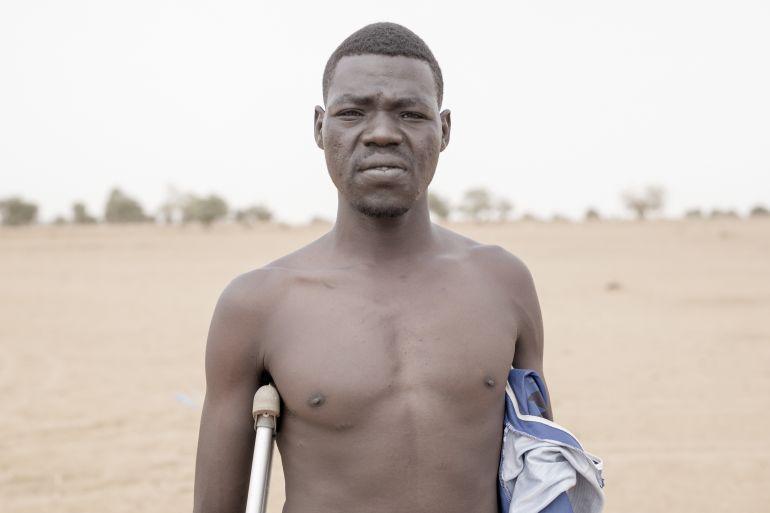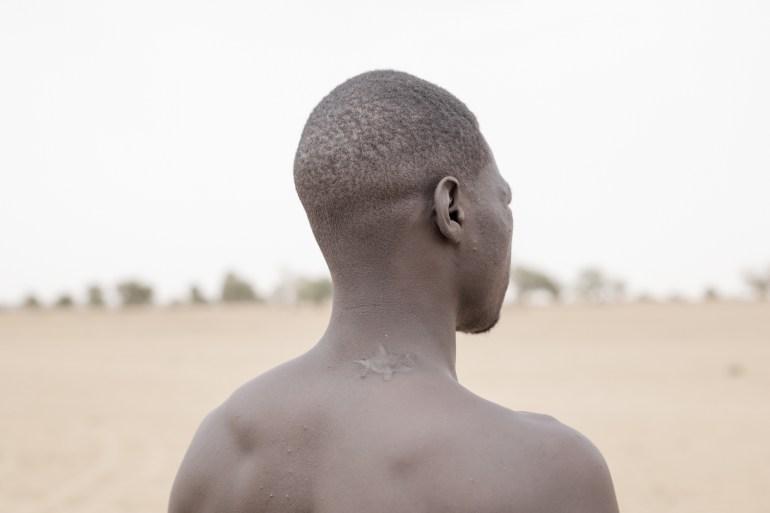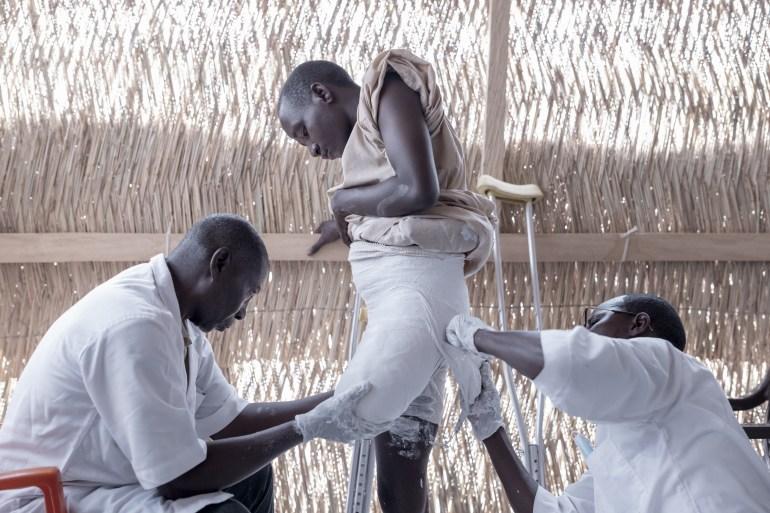Source: ALJAZEERA
ALJAZEERA MEDIA NETWORK

Survivors of the alleged massacre by RSF forces in Darfur recount their traumas and challenging paths to physical and emotional recovery.
Aboutengue, Chad – In June 2023, Sudan’s Rapid Support Forces (RSF) invaded Yahiya Adam's home, murdering his brother and father.
They shot him as well and left his body on the streets of el-Geneina, West Darfur’s capital.
Adam, 27, lay semi-conscious and bleeding from the back of his neck, shoulder, and arms, while blood pooled in the hot sand around him.
As he gazed at his home, he witnessed RSF fighters raping his three sisters.
Despite hearing their cries, he was powerless to help.
“They were raped in front of me. I saw everything,” Adam recounted.
“There were around 20 RSF fighters in my home,” he told Al Jazeera.
 Adam shows the scar of a bullet wound that hit him in the lower neck.
Adam shows the scar of a bullet wound that hit him in the lower neck.
Hundreds of thousands of civilians from the Masalit farming tribe saw their families killed and their community expelled to eastern Chad roughly a year ago.
The mass exodus followed accusations by West Darfur’s Governor Khamis Abkar that the RSF and allied nomadic fighters were committing genocide against the Masalit.
Abakar, leader of the Sudanese Alliance, a Masalit armed group, was abducted and killed on the same day.
Later, social media circulated footage of an RSF truck driving over his body while women threw rocks at his remains.
RSF fighters allegedly began raiding homes, causing Masalit families to flee across the border into Chad. According to a UN panel of experts, between 10,000 and 15,000 people were killed in el-Geneina alone.
The RSF denied these allegations, saying it tried to protect the governor and attributed high casualty numbers to a pre-existing tribal conflict.
The Rapid Support Forces strongly condemns the recent assassination of West Darfur Governor Khamis Abdullah Abkar by outlaws amid the ongoing tribal conflict in the state. We hold the Sudanese Military Intelligence, a wing of the Sudanese Armed Forces (SAF), and its radical…
— Rapid Support Forces - قوات الدعم السريع (@RSFSudan) June 15, 2023
“Despite our efforts to protect the governor, outlaws launched a large-scale raid resulting in his kidnapping and tragic assassination,” the RSF stated on X, previously known as Twitter.
However, survivors told Al Jazeera that RSF fighters killed the governor, ambushed and killed people trying to escape, who were shooting them in their backs, legs, or arms.
Those who survived still struggle with physical and emotional scars.
 Sudanese refugee Ahmad Ababkr Bahkit in Chad.
Sudanese refugee Ahmad Ababkr Bahkit in Chad.
Adam displayed bullet scars on his neck, shoulder, ribcage, and chest.
After his sisters were raped, he vaguely remembers being thrown into a pick-up truck and dumped over the border in Chad.
“They left me to die,” he said. “I was covered in blood.”
Adam woke up in a nearby clinic run by Doctors Without Borders (MSF), unaware of how he got there but relieved to learn that his mother and sisters survived.

They sought refuge in an internal displacement camp before heading to Chad when the roads cleared.
“Friends found me in the hospital and informed my family,” he said.
“Seeing them again was a huge relief. I thought they were all gone.”
When the governor was killed, Ahmad Ababakr Bakhit hid at home with his sister.
RSF fighters burst in, shot him in his right leg, and stabbed him with a stick in his abdomen.
His sister acted promptly to save his life by bandaging his wounds and getting him to a doctor who eventually amputated his leg.
“The doctor had limited tools but went above and beyond to save me,” Bakhit, 27, told Al Jazeera.
His sister then transported him over the border to Chad on a donkey cart.

Once in Chad, he received treatment and pain relief at a clinic.
“My sister saved my life,” he said simply.
Bakhit’s sister now works in a market to support him, his brother, and his mother.
He wants to contribute but awaits a prosthetic leg from the Humanity and Inclusion organization.
He plans to work once he can walk independently.
At the Humanity and Inclusion center, Mohamad Isaac patiently waits for a prosthetic leg.
Like many from the Masalit tribe, he barely survived the massive killings in el-Geneina.
The 37-year-old recounted that RSF fighters raided his home, killed his father and nephew, and shot him in the leg.
Isaac lost consciousness in a pool of his own blood and recalled RSF fighters declaring, “The Masalit are finished.”
“They attacked all Masalit areas after killing the governor,” he told Al Jazeera.

His brothers found him alive after his attackers left, bandaged his leg, and took him to Chad, where doctors amputated his leg to save his life.
Isaac struggled with depression in the following weeks. One of his wives left him as he could no longer support their children. His other wife chose to stay.
“I thought, 'How will I live?'” Isaac reflected.
He turned to his faith to cope with the trauma.
Since arriving in Chad, he has taught Sudanese children the Quran, encouraging them to appreciate life even after losing so much.
“I teach children in and outside the camp,” he said.
“That’s how I found meaning and restarted my life.”
This story is made possible by a reporting trip facilitated and organized by EU Humanitarian Aid to eastern Chad.
Your email address will not be published. Required fields are marked *